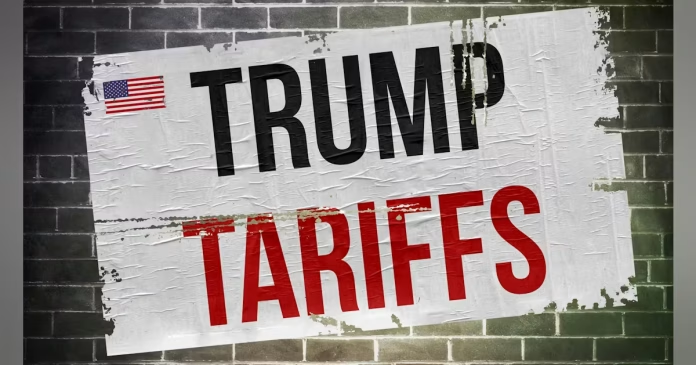The US-China trade war has taken a sharp turn with the United States imposing up to 245% tariffs on Chinese imports, according to a recent White House fact sheet. This unprecedented move marks one of the most aggressive steps in ongoing trade tensions between the world’s two largest economies. The new tariff hike, introduced under President Donald Trump’s second term, aims to counter China’s retaliatory measures and reshape global trade dynamics.
In This Article:
Background: How the Tariff War Began
The roots of the US-China trade war trace back to 2018, when then-President Trump launched a series of tariffs targeting Chinese goods to correct what he described as unfair trade practices, intellectual property theft, and a massive trade deficit. China responded in kind, triggering a tit-for-tat escalation that unsettled global markets and disrupted supply chains.
During Trump’s first term, these tariffs sparked negotiations, temporary ceasefires, and even a “Phase One” trade agreement. However, with the renewed administration, President Trump has reasserted his commitment to what he calls “fair and reciprocal trade,” insisting that the U.S. must not continue to be taken advantage of by foreign powers—especially China.
What’s New in 2025?
In 2025, the White House has introduced a significant revision: an increase of tariffs on Chinese exports from 145% to a staggering 245%. This change comes despite a temporary pause on tariffs for over 75 countries that have initiated discussions with the U.S. to reach balanced trade agreements. China, however, remains excluded from this exemption due to its continued retaliatory stance.
The White House fact sheet emphasizes that a baseline tariff of 10% remains in place on all imports, while countries with the largest trade deficits face individualized reciprocal tariffs.
Economic Repercussions
The global markets responded swiftly—and negatively. Equity markets across Asia and Europe tumbled, while U.S. investors expressed concern about rising inflation, reduced corporate profits, and the risk of a broader economic slowdown.
For businesses dependent on Chinese components, the higher tariffs mean increased costs and potentially reduced competitiveness. Sectors like electronics, automotive, and consumer goods may face the brunt of these changes. Small- and mid-sized enterprises in the U.S. could be disproportionately impacted, as they often lack the scale to absorb such cost increases.
On the other side, Chinese exporters are bracing for a sharp decline in U.S. demand. This development may push China to look for alternative markets or ramp up domestic consumption—strategies already being explored under its “dual circulation” economic policy.
Political Implications and Global Reactions
Trump’s tariff policy continues to polarize global opinion. Proponents argue that these measures are necessary to protect U.S. jobs, counter China’s state-driven economic model, and reduce dependence on foreign manufacturing. Critics, however, warn of protectionism spiraling into long-term damage to international trade systems and multilateral cooperation.
Countries observing from the sidelines now face a dilemma: align with U.S. expectations for new trade deals or risk becoming the next target of reciprocal tariffs.
Notably, this move also reaffirms the U.S.’s willingness to challenge not only China but also other trade partners, including India, if perceived trade imbalances persist. Trump’s “America First” doctrine continues to reshape the contours of economic diplomacy.
The Road Ahead
As trade negotiations continue, both Washington and Beijing will need to weigh their next steps carefully. For the U.S., the challenge lies in enforcing trade fairness without alienating global partners or igniting inflation. For China, the goal is to minimize economic disruption while maintaining geopolitical standing.
Global businesses, meanwhile, must prepare for prolonged uncertainty. Many are re-evaluating their supply chains, exploring nearshoring options, and investing in regions less vulnerable to tariff volatility.
One thing is clear: the US-China trade war is no longer just about tariffs. It represents a deepening struggle for global influence, economic leadership, and ideological supremacy in the 21st century.
The rise in U.S. tariffs to 245% on Chinese goods is more than a headline—it’s a harbinger of a more complex and fragmented global trade order. Whether this aggressive stance yields long-term benefits for the U.S. or backfires into economic isolation remains to be seen. But for now, businesses, investors, and policymakers worldwide must brace themselves for an era of continued disruption and strategic recalibration.
By – Jyothi




